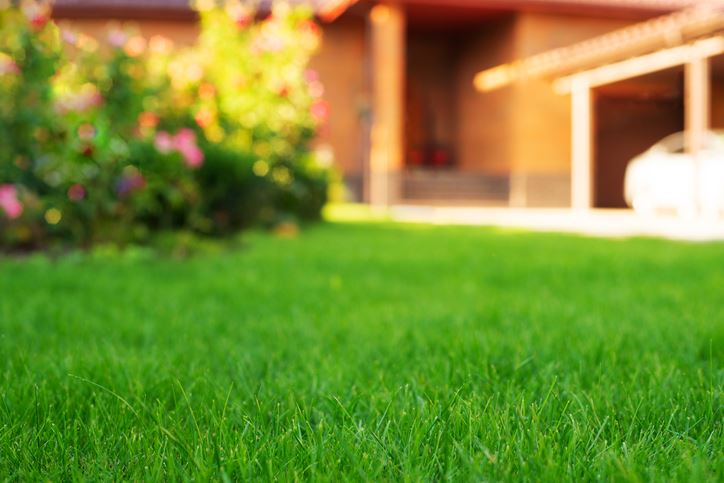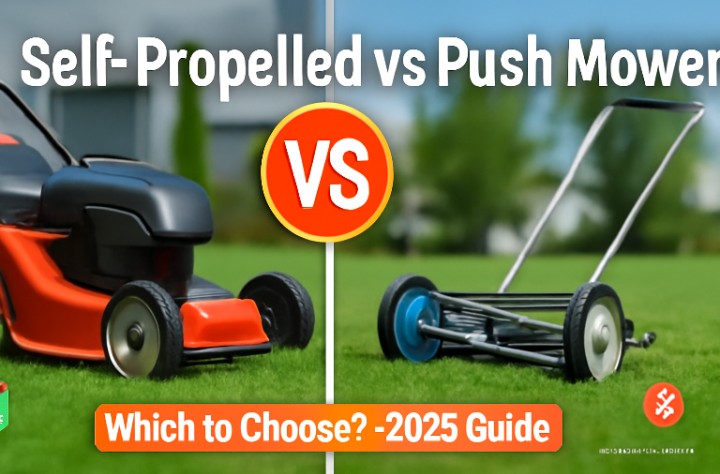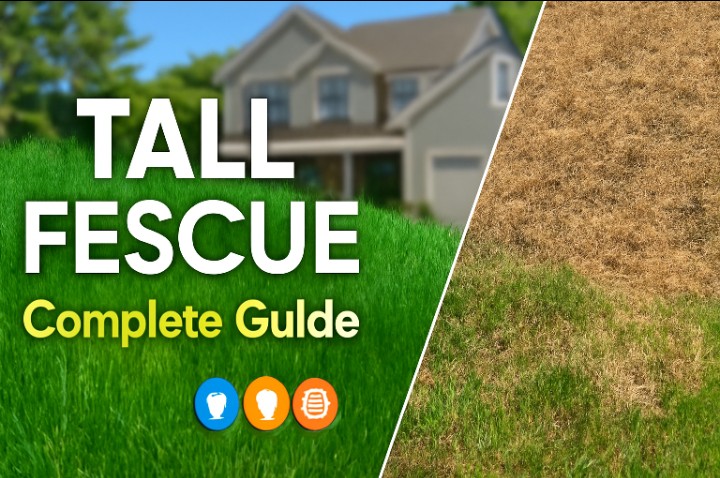You know that feeling when you are walking your dog at 6 AM? You pass by Mike’s house down the street. His lawn looks absolutely perfect – like something from a home magazine. Then you glance at your own yard. Ugh, Brown spots everywhere. Patchy grass that looks more like a bad haircut. Your kids will not even play on it because it’s so rough.
Been there, friend. We have all been there. But here is the thing – Mike is not some lawn wizard with secret powers. He just learned a few tricks that most of us never figured out. The good news? I’m about to share them with you.
Why Bother With a Great Lawn in 2025?
Look, I used to think lawn care was just for retired guys with too much time. Then I realized something important. Your front yard is literally the first thing anyone sees. When your sister visits, when the mail carrier stops by, when potential buyers drive past someday. A gorgeous lawn makes your whole house look expensive.
Plus, there is something magical about having this soft green space. Last summer, my neighbor Sarah told me her family started having picnics on their lawn again. Her kids actually put down their tablets to play outside. Something cool is happening lately. People are ditching the old “spray everything with chemicals” approach. They want beautiful grass without poisoning their pets or groundwater.
Three game-changing trends are making this possible:
– Wetting agents that make water actually stick around
– Greywater systems turning shower water into lawn irrigation
– Smart tech that does the thinking for you
Finding Your Perfect Grass Match
The Old Faithfuls
Cool-season grasses are like that reliable friend who shows up every time. Kentucky Bluegrass creates those Instagram-worthy lawns. But man, does it guzzle water like a teenager drinks soda.
Ryegrass? Super fast grower. Great for families with kids who treat the yard like a playground. Fescue handles shade better than most people handle Monday mornings. Now, warm-season varieties are completely different beasts. Bermuda grass forms this incredibly thick carpet. Walking barefoot on mature Bermuda feels like stepping on luxury hotel carpet. Zoysia takes forever to get going but becomes practically indestructible. The catch? Both turn brown when winter hits. Looks like your lawn went into hibernation.
The Rising Star: Buffalo Grass
Okay this is where things get really interesting. Buffalo Grass is having its moment in 2025. Picture the old American West. Endless prairies stretching to the horizon. Buffalo Grass (Bouteloua dactyloides) covered millions of acres. It survived everything – drought, stampeding herds, prairie fires, brutal winters.
That same toughness makes it perfect for today’s water-conscious homeowners. My friend Jake in Phoenix switched to Buffalo grass two years ago. His water bill dropped by 60%. His lawn still looks great even when temperatures hit 115 degrees. He mows maybe once a month instead of every weekend. “Best decision I ever made,” he told me last month. “My weekends are actually mine again.”
Buffalo grass naturally fights diseases and pests. It forms dense, thick turf that feels amazing underfoot. Kids love playing on it because it is so soft and durable.
Getting Your Soil Right
Alright, let’s talk about the unsexy stuff that actually matters most. Your soil. Most people skip this step. They buy expensive grass seed, throw it down and wonder why nothing grows. Don’t be most people. Acidity and alkalinity levels drastically affect how well your lawn grows and flourishes. Think of it like baking – wrong pH is like using salt instead of sugar. Everything fails.
To test soil pH, you will need clean soil samples from different areas. Home test kits work fine for basic info. Lab tests give you the full story about nutrients and problems. Here is what successful lawn people do. Test your soil at least twice yearly – spring and fall catches changes before they wreck your grass. Fix problems early instead of fighting them all season.
The actual seeding process is not rocket science:
1. Prepare soil properly (remove weeds, loosen compact areas)
2. Spread seeds evenly – don’t dump huge piles in spots
3. Cover lightly with compost for better germination
Timing Overseeding Like a Pro
Most homeowners completely butcher this timing. They overseed in spring when every weed in the neighborhood is waking up hungry. Smart people do it differently. Late summer is the ideal time for overseeding existing lawns. Late summer and early fall work best for cool-season grasses. The best time for planting cool-season grasses in northern regions is late summer to early fall, when they are growing most vigorously.
Think about why this works. Warm soil helps seeds germinate quickly. Cool fall air encourages strong root development. Your new grass gets established before winter stress arrives. Weeds are not as aggressive in fall either. Your grass seedlings get a fair fight.
Watering Like You Actually Understand Plants
Forget everything your dad taught you about watering. Daily light sprinkling is like giving someone tiny sips of water in the desert. Useless. Deep, infrequent watering trains roots to grow down deep. Water early morning to minimize evaporation. Aim for about one inch weekly including natural rainfall.
But here is where most people mess up completely.
The Magic of Wetting Agents
Bet you have never heard of wetting agents. Most homeowners have not. These products completely change how water behaves in problem soils. They improve water absorption and retention in dry, compact conditions. Imagine trying to wet a waterproof jacket with a spray bottle. Water just beads up and rolls off.
That’s your clay soil without wetting agents. With them, water spreads evenly and soaks deep where roots can actually use it. My neighbor Tom has this brutal clay soil. Water would just sit on top like puddles on concrete. He started using wetting agents last spring. Now his irrigation actually works instead of creating runoff streams down the street.
Technology That Changed Everything
Smart irrigation systems used to cost thousands. Now they are affordable for regular homeowners. These digital systems deliver water exactly where grass needs it. No more accidentally watering the sidewalk or your neighbor’s driveway. AI-driven systems monitor soil moisture and weather automatically.
They adjust watering schedules based on tomorrow’s forecast. Some people cut water usage by 30% while getting better results than ever. Sarah from my neighborhood installed one last year. “It’s like having a lawn expert watching my grass 24/7,” she said. “I don’t even think about watering anymore.”
The Greywater Game Changer
Here is something most people don’t realize. Greywater systems capture perfectly good water from your household. Sinks, showers, washing machines – all that water goes down the drain. Greywater systems redirect it to keep your lawn green instead.
This environmentally friendly approach makes total sense. Why use drinking water on grass when recycled household water works perfectly? Progressive communities are embracing these systems everywhere. Installation costs pay for themselves through reduced water bills. Plus you feel good about not wasting resources.
Aeration: Your Grass Needs to Breathe
Compacted soil is like wrapping your grass roots in plastic bags. Aeration punches holes that create breathing room for healthy development.
Here is how to know if you need it. Walk across your lawn. Does it feel spongy and bouncy? When you water, does it run off instead of soaking in? You have got thatch buildup choking your grass.
Thick thatch layers over half an inch block nutrients from reaching roots. It’s like trying to feed someone through a thick blanket. Aerate during spring or fall when grass can recover quickly. Professional equipment works better than those spike shoes you see advertised. Core aeration actually removes soil plugs instead of just poking holes.
Feeding Your Grass Without Burning It
Fertilizer aisles overwhelm most people. Dozens of products promising miracle results. Marketing nonsense everywhere. Here is what actually works. Slow-release fertilizers provide steady nutrition over months. They won’t burn grass like quick-release products that dump everything at once.
Follow package directions for your specific grass type. Don’t guess and don’t think “more is better.” Fall “winterizer” fertilization helps cool-season grass build energy reserves. It’s like eating a good meal before running a marathon. Spring feeding kickstarts growth when grass wakes up.
Going Natural (Because Chemicals Are not Everything)
More families are choosing organic approaches. Especially those with kids and pets who actually use the lawn. Compost tea provides gentle nutrition without harsh chemicals. It’s like feeding your grass homemade soup instead of fast food. Grasscycling returns free fertilizer automatically.
Don’t bag those clippings. Leave them on the lawn after mowing. They decompose quickly and feed beneficial soil organisms. Some homeowners plant clover patches for natural nitrogen production. My friend Lisa started this two years ago. Her lawn looks amazing and her dog does not track in chemical residue anymore.
Mowing Like You Actually Care
The one-third rule isn’t optional. Never cut more than one-third of blade length at once. Cutting too short stresses grass and creates entry points for weeds. Here is something most people never think about. Return those clippings as natural mulch. It’s like getting free fertilizer delivered every week.
Alternate mowing directions to prevent soil compaction. Your grass develops these permanent lean patterns otherwise. Change between diagonal, vertical and horizontal cuts. Sharp mower blades make clean cuts that heal quickly. Dull blades tear grass, creating ragged brown tips that look horrible. Sharpen blades at least twice per season. Jim next door never sharpens his blades. His grass always looks like it got attacked by a hedge trimmer. Don’t be Jim.
The Robot Revolution
Mowers That Work While You Sleep
2025 brought incredible advances in robotic lawn care. These are not those weird disk-shaped things that got stuck on everything. Modern robotic mowers navigate using sophisticated AI mapping. They handle slopes and obstacles with impressive precision. Advanced models detect kids’ toys, garden hoses and pets automatically.
You monitor everything through smartphone apps. Set schedules, check progress, adjust cutting heights from your couch. Picture this scenario. You are watching Netflix on Sunday afternoon. Your robot is outside quietly maintaining perfect grass height. It mulches clippings automatically and returns to charge itself when finished. My buddy Mark got one last spring. “Best $2,000 I ever spent,” he told me. “I have not pushed a mower in eight months. My weekends are completely free now.”
Irrigation Gets Scary Smart
AI-driven irrigation systems use sensors that actually measure soil moisture levels. No more guessing if your grass needs water. These systems adjust automatically based on weather forecasts. Precise delivery eliminates waste on driveways and sidewalks. Some connect to local weather stations for hyper-accurate scheduling.
This technology is not fantasy anymore. Regular homeowners use these systems successfully today.
Beyond Traditional Lawns
Maybe you are tired of weekend mowing and constant watering. Native wildflower meadows replace high-maintenance grass beautifully. They support local bees and butterflies while needing minimal water. Prairie plants develop deep root systems that actually improve soil over time.
Buffalo grass works perfectly for drought-resistant landscapes. Xeriscaping combines drought-tolerant plants with decorative rocks or attractive mulch. Maintenance requirements drop dramatically once everything gets established. Some people keep small lawn areas for activities and plant native alternatives everywhere else.
When Everything Goes Wrong
Brown or yellow patches usually scream drainage problems. Sometimes overwatering causes the same symptoms as drought stress. Improve drainage first, then reduce watering temporarily. Weed invasions, moss takeovers and fungal diseases need different approaches. Better drainage and proper aeration solve many issues naturally. Organic treatments work effectively for persistent problems.
High-traffic areas demand specially selected grass varieties. Some handle foot traffic way better than others. Consider installing pathways or reinforcement for zones that get hammered regularly. My neighbor’s kids created this permanent path between their back door and trampoline. Finally she just installed stepping stones instead of fighting it.
Planning Your Year Like a Pro
Spring focuses on feeding grass and repairing winter damage. Summer emphasizes proper watering schedules and maintaining ideal mowing heights. Fall brings overseeding opportunities and winterization preparation. Successful lawn people create seasonal schedules addressing timing for every task. They know exactly when to aerate, fertilize, and perform maintenance. Proper timing makes the difference between success and endless frustration.
Choose grass varieties appropriate for your specific climate. Drought management becomes more critical every year. Long-term maintenance planning keeps lawns consistently healthy.
Your Journey Starts Now
Creating that neighbor-envy lawn takes patience and consistent effort. Start with proper soil testing and choose appropriate grass varieties for your situation. Modern technology makes lawn care easier than it’s ever been. Smart irrigation handles watering automatically. Robotic mowers eliminate weekend chores. Eco-friendly approaches protect environment and family health.
With these proven methods, your dream lawn absolutely becomes reality. Stop staring at Mike’s perfect grass with jealousy. Start planning your own lawn transformation right now.
This time next year, other neighbors will be walking past your house wondering how you did it.






